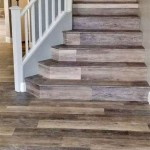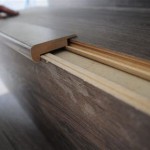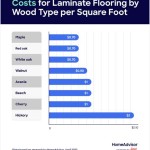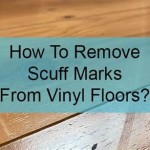Choosing the Right Flooring for Your Workout Room
Creating a dedicated workout space at home offers numerous benefits, including convenience, privacy, and the ability to exercise on one's own schedule. However, a crucial element often overlooked is the flooring. The appropriate flooring not only enhances the aesthetics of the room but also significantly impacts safety, comfort, and the longevity of workout equipment. Selecting the right material requires careful consideration of factors like the type of exercises planned, the size of the space, budget constraints, and desired maintenance levels.
This article aims to provide a comprehensive overview of various flooring options suitable for workout rooms, highlighting their advantages, disadvantages, and key considerations to help make an informed decision. The selection process should be tailored to individual needs and exercise preferences to ensure a safe and effective workout environment.
Understanding the Key Requirements for Workout Room Flooring
Before exploring specific flooring materials, it's essential to understand the fundamental requirements that effective workout room flooring should meet. These requirements ensure both user safety and the preservation of the subfloor and the equipment used during workouts.
Durability: Workout rooms are subjected to significant wear and tear. The flooring must be able to withstand the impact of dropped weights, the friction of exercise equipment, and the constant movement of feet. High-impact exercises like jumping jacks, burpees, and weightlifting can quickly damage less resilient materials. Ideally, the flooring should resist dents, tears, and scratches, ensuring a long lifespan and reducing the need for frequent replacements.
Impact Absorption: Shock absorption is critical for minimizing the risk of injuries, particularly those affecting joints like knees and ankles. The flooring should cushion the impact of high-intensity exercises and reduce the strain on the body. This is especially important for individuals with pre-existing joint problems or those engaging in plyometric exercises. Effective impact absorption also helps to reduce noise and vibration transmitted to other parts of the house, minimizing disruption.
Slip Resistance: A non-slip surface is paramount for safety. Slippery floors can lead to accidents and injuries, especially during dynamic movements. The flooring material should provide adequate traction, even when wet with sweat. Grooved or textured surfaces generally offer better slip resistance than smooth, polished surfaces. Consider the coefficient of friction of the material to ensure it meets safety standards.
Ease of Cleaning: Workout rooms tend to accumulate sweat, dirt, and dust. The flooring should be easy to clean and maintain to prevent the growth of bacteria and mold. Materials that are resistant to moisture and stains are preferable. Regular cleaning is essential to maintain hygiene and prolong the lifespan of the flooring. Ideally, the flooring can be easily wiped down or mopped without requiring specialized cleaning products or techniques.
Maintenance: The effort required to maintain the flooring over the long term is a significant factor. Some materials require minimal maintenance, while others may need regular sealing or refinishing. Consider the time commitment and cost associated with maintaining the flooring before making a decision. Opting for a low-maintenance option can save time and money in the long run.
Exploring Different Flooring Options
Several flooring materials are commonly used in workout rooms, each offering unique characteristics and suitability for different types of exercises and budgets. Evaluating these options based on the previously mentioned requirements is crucial for making the right choice.
Rubber Flooring: Rubber flooring is a popular choice for workout rooms due to its excellent durability, impact absorption, and slip resistance. It's available in various forms, including interlocking tiles, rolls, and mats. Interlocking tiles are easy to install and can be configured to fit any space. Rubber rolls offer a seamless surface and are ideal for larger areas. Rubber mats are portable and can be used for specific exercises or equipment placement.
Rubber flooring is highly resistant to dents, tears, and scratches, making it suitable for weightlifting and high-impact activities. It also effectively absorbs shock, reducing the strain on joints and minimizing noise. Many rubber flooring options are made from recycled materials, making them an environmentally friendly choice. However, rubber flooring can have a distinct odor, particularly when new, and may require proper ventilation. It can also be relatively expensive compared to other options.
Foam Tiles: Foam tiles, typically made from EVA (ethylene-vinyl acetate) foam, offer excellent cushioning and are often used in martial arts studios and yoga rooms. They are lightweight, easy to install, and relatively inexpensive. Foam tiles provide good shock absorption, making them suitable for bodyweight exercises and activities that require a soft surface. They are also available in various colors and patterns, allowing for customization of the workout space.
However, foam tiles are less durable than rubber flooring and may not be suitable for heavy weightlifting or exercises that involve sharp objects. They can be easily dented or torn, and may require frequent replacement. Foam tiles also tend to be less resistant to moisture and may harbor bacteria if not cleaned regularly. While a budget-friendly option, their limited durability should be considered.
Carpet Tiles: Carpet tiles offer a comfortable and warm surface for workout rooms. They are available in a wide range of colors and patterns, and can be easily installed and replaced. Carpet tiles provide some degree of cushioning and can help to reduce noise. They are suitable for low-impact exercises like yoga, Pilates, and stretching.
However, carpet tiles are not ideal for high-intensity workouts or weightlifting. They can be easily stained by sweat and spills, and may require professional cleaning. Carpet can also harbor bacteria and allergens, making it less hygienic than other flooring options. Furthermore, the cushioning can be problematic for some exercises, increasing the risk of ankle rolls or stability issues.
Vinyl Flooring: Vinyl flooring, particularly luxury vinyl plank (LVP) or luxury vinyl tile (LVT), offers a durable and water-resistant option for workout rooms. It is available in a variety of realistic wood and stone looks, providing an aesthetic appeal. Vinyl flooring is relatively easy to install and maintain, and is resistant to scratches and dents. It also offers some degree of sound absorption.
While vinyl flooring is more durable than carpet or foam tiles, it may not provide sufficient impact absorption for high-impact exercises or weightlifting. It is essential to choose a thicker vinyl flooring with a cushioned underlayment to improve shock absorption. Vinyl flooring can be slippery when wet, so it's important to select a textured or slip-resistant option. It’s also less giving than rubber flooring and may not be the best choice for people with joint problems.
Hardwood Flooring: Hardwood flooring offers a classic and elegant look for workout rooms. It is durable and can last for many years with proper care. Hardwood flooring is suitable for low-impact exercises like yoga and Pilates. It can also be used in combination with rubber mats or tiles for specific workout areas.
However, hardwood flooring is not ideal for high-intensity workouts or weightlifting. It can be easily scratched or dented by dropped weights or equipment. Hardwood flooring is also susceptible to moisture damage and may require regular sealing. Protecting the floor with mats is crucial for preventing damage during workouts. Hardwood can also be quite expensive compared to other options.
Considerations for Installation and Underlayment
The installation process and the use of an underlayment play a crucial role in the performance and longevity of workout room flooring. Proper installation ensures a secure and level surface, while an underlayment provides additional cushioning, sound absorption, and moisture protection.
Many flooring options, such as rubber tiles and foam tiles, are designed for DIY installation. These tiles typically interlock, making them easy to assemble and customize. However, larger areas may require professional installation to ensure a seamless and secure surface. Vinyl flooring and hardwood flooring often require professional installation, especially if complex patterns or designs are desired.
An underlayment is a layer of material installed between the subfloor and the flooring. It provides several benefits, including improved shock absorption, reduced noise transmission, and enhanced moisture resistance. A cushioned underlayment can significantly improve the comfort and safety of the workout space, especially for high-impact exercises. It also helps to protect the subfloor from damage caused by dropped weights or equipment. The type of underlayment used should be compatible with the chosen flooring material and the specific needs of the workout space. For instance, a moisture-resistant underlayment is crucial for areas prone to dampness or spills.
Assessing the Cost and Long-Term Value
The cost of workout room flooring can vary significantly depending on the material, installation requirements, and size of the space. It's essential to consider not only the initial cost but also the long-term value and maintenance expenses. A cheaper option may require frequent replacement, while a more expensive option may offer greater durability and longevity.
Rubber flooring tends to be more expensive than foam tiles or carpet tiles, but it offers superior durability and impact absorption. Vinyl flooring and hardwood flooring can also be relatively expensive, depending on the quality and installation costs. It's important to obtain quotes from multiple suppliers and installers to compare prices and ensure a fair deal. Consider the cost of underlayment and any necessary preparation work, such as leveling the subfloor.
In addition to the initial cost, factor in the long-term maintenance expenses. Some flooring materials require regular sealing or refinishing, while others are virtually maintenance-free. Consider the time and effort required to clean and maintain the flooring to ensure it remains in good condition. Choosing a durable and low-maintenance option can save time and money in the long run.
Ultimately, the best flooring for a workout room depends on individual needs, preferences, and budget. Carefully evaluate the requirements, explore different options, and consider the long-term value to make an informed decision that creates a safe, comfortable, and effective workout environment.

Gym Floor Workout Fitness Tile Pebble 3 4 Inch X 2x2 Ft

What Is Gym Flooring Made Out Of Inc

Gym Floor Fitoverse

Best Gym Floor Over Carpet For Home Staylock Tiles

Paviflex Fitnesspro Marble Sand Rubber Flooring

Virgin Rubber Tile With Foam Interlocking Tiles Diy Floor

Create Your Perfect Workout Space At Home Flooring Cincinnati

Home Sport And Play Mat 3 4 Inch X 2x2 Ft

1 2cm Thick Eva Foam Exercise Gym Mats 12 Pcs Interlocking Puzzle Floor Tiles For Home Heavy Workout Equipment Flooring

Choosing The Perfect Gym Flooring A Complete Guide For Fitness Enthusiasts
Related Posts








